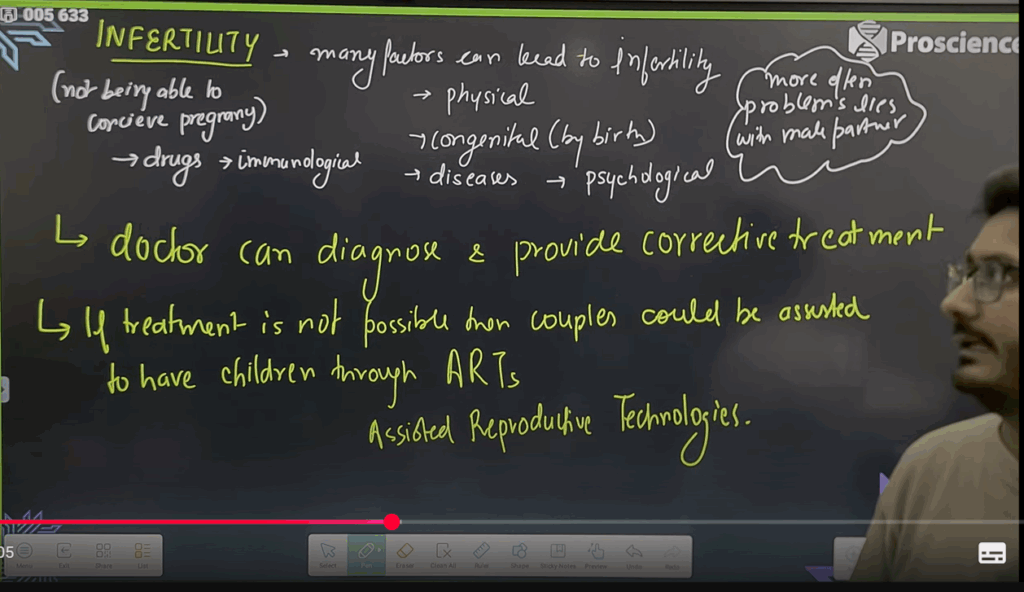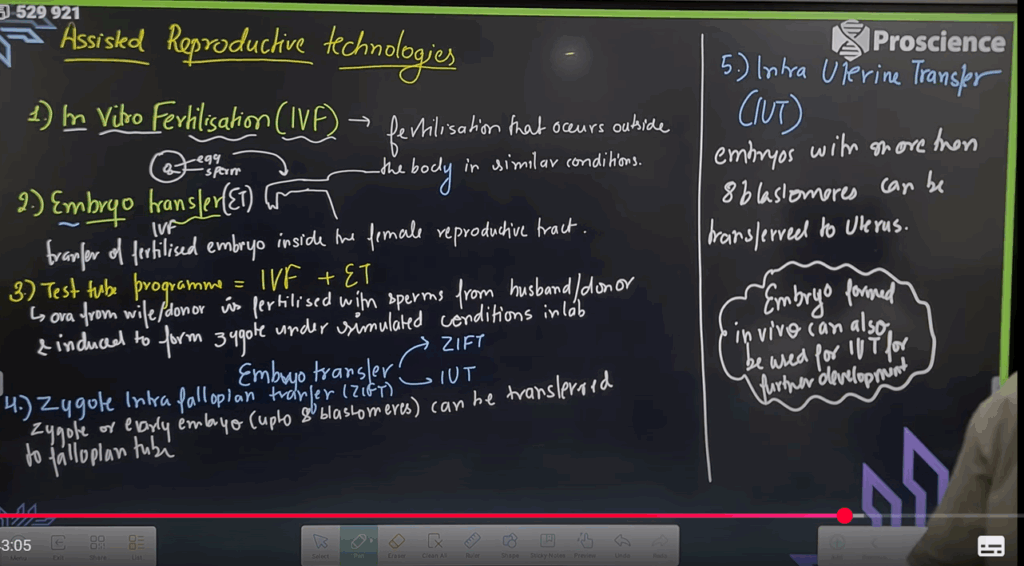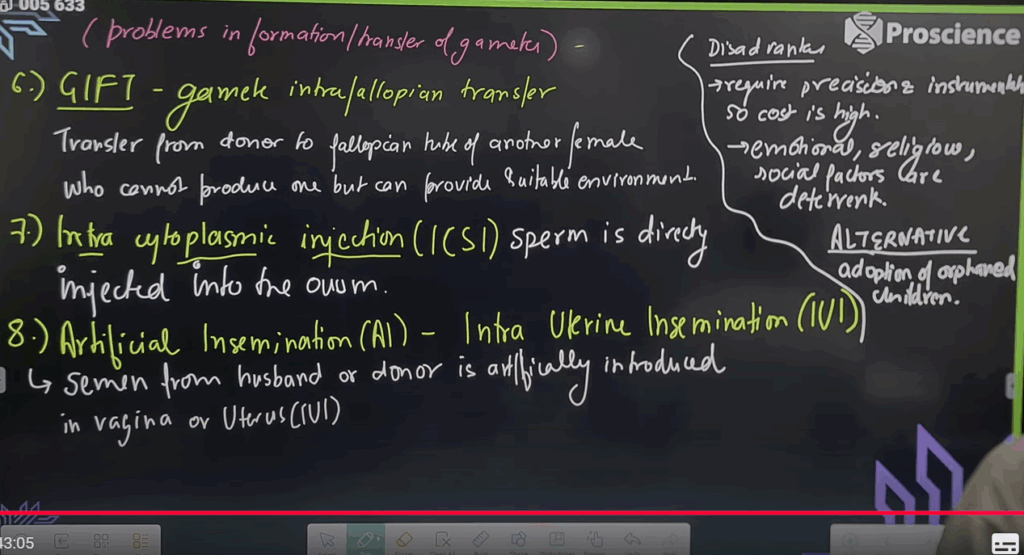VIDEOS
NOTES




ASSIGNMENT
Section A: Multiple Choice Questions (1 mark each)
[Total: 5 marks]
- Which of the following is NOT a sexually transmitted infection?
a) Syphilis
b) Gonorrhoea
c) AIDS
d) Malaria - Which of these is a common early symptom of many STIs?
a) Severe headache
b) Painful urination and discharge
c) Swelling of limbs
d) Skin pigmentation - Which ART involves the direct insertion of sperm into the uterus?
a) IVF
b) IUT
c) IUI
d) ZIFT - In IVF, fertilisation occurs:
a) In the uterus
b) In the ovary
c) In vitro (outside the body)
d) In the cervix - GIFT involves the transfer of:
a) Zygote
b) Embryo
c) Sperm
d) Gametes
Section B: Assertion and Reason (1 mark each)
[Total: 5 marks]
Assertion (A): STIs can lead to infertility if untreated.
Reason (R): Most STIs damage the urinary bladder only.
a) Both A and R are true, and R is the correct explanation.
b) Both A and R are true, but R is not the correct explanation.
c) A is true, R is false.
d) A is false, R is true.
Assertion (A): Artificial insemination is used when the male partner has low sperm count.
Reason (R): It involves injecting sperms from a donor or husband into the female reproductive tract.
(Options same as above)
Assertion (A): IUT is used when fertilisation has occurred outside the body.
Reason (R): The embryo is transferred directly into the fallopian tube.
(Options same as above)
Assertion (A): IVF is also called test-tube baby technique.
Reason (R): Fertilisation occurs inside the uterus in IVF.
(Options same as above)
Assertion (A): GIFT is preferred when at least one fallopian tube is functional.
Reason (R): It requires natural fertilisation inside the female body.
(Options same as above)
Section C: One-Word Answers (1 mark each)
[Total: 3 marks]
- Name one bacterial STI that affects the genital tract.
- Which ART involves transferring the zygote into the fallopian tube?
- What does IUI stand for?
Section D: Two-Marker Questions (2 marks each)
[Total: 4 marks]
- Write two ways to prevent STIs.
- What are two advantages of IVF over natural fertilisation?
Section E: Three-Marker Question (3 marks)
[Total: 3 marks]
- Differentiate between ZIFT, GIFT, and IUT based on where and what is transferred.
KEY
Here is the Answer Key for the assignment on Sexually Transmitted Infections (STIs) and Assisted Reproductive Techniques (ART) from the Reproductive Health chapter (Class 12 Biology – NCERT):
✅ Answer Key
Section A: Multiple Choice Questions
- d) Malaria
- b) Painful urination and discharge
- c) IUI
- c) In vitro (outside the body)
- d) Gametes
Section B: Assertion and Reason
- c) A is true, R is false
- a) Both A and R are true, and R is the correct explanation
- a) Both A and R are true, and R is the correct explanation
- c) A is true, R is false
- a) Both A and R are true, and R is the correct explanation
Section C: One-Word Answers
- Gonorrhoea / Syphilis
- ZIFT (Zygote Intra Fallopian Transfer)
- Intrauterine Insemination
Section D: Two-Marker Questions
- Two ways to prevent STIs:
- Use of condoms during sexual intercourse
- Avoiding multiple sexual partners and seeking early medical help if symptoms appear
- Two advantages of IVF:
- Helps couples with blocked fallopian tubes or low sperm count
- Increases chances of fertilisation through external monitoring and selection of viable gametes
Section E: Three-Marker Question
- Differences between ZIFT, GIFT, and IUT:
| Technique | What is Transferred | Where it is Transferred |
|---|---|---|
| ZIFT | Zygote | Fallopian tube |
| GIFT | Gametes (egg + sperm) | Fallopian tube |
| IUT | Embryo (early stage) | Uterus |
